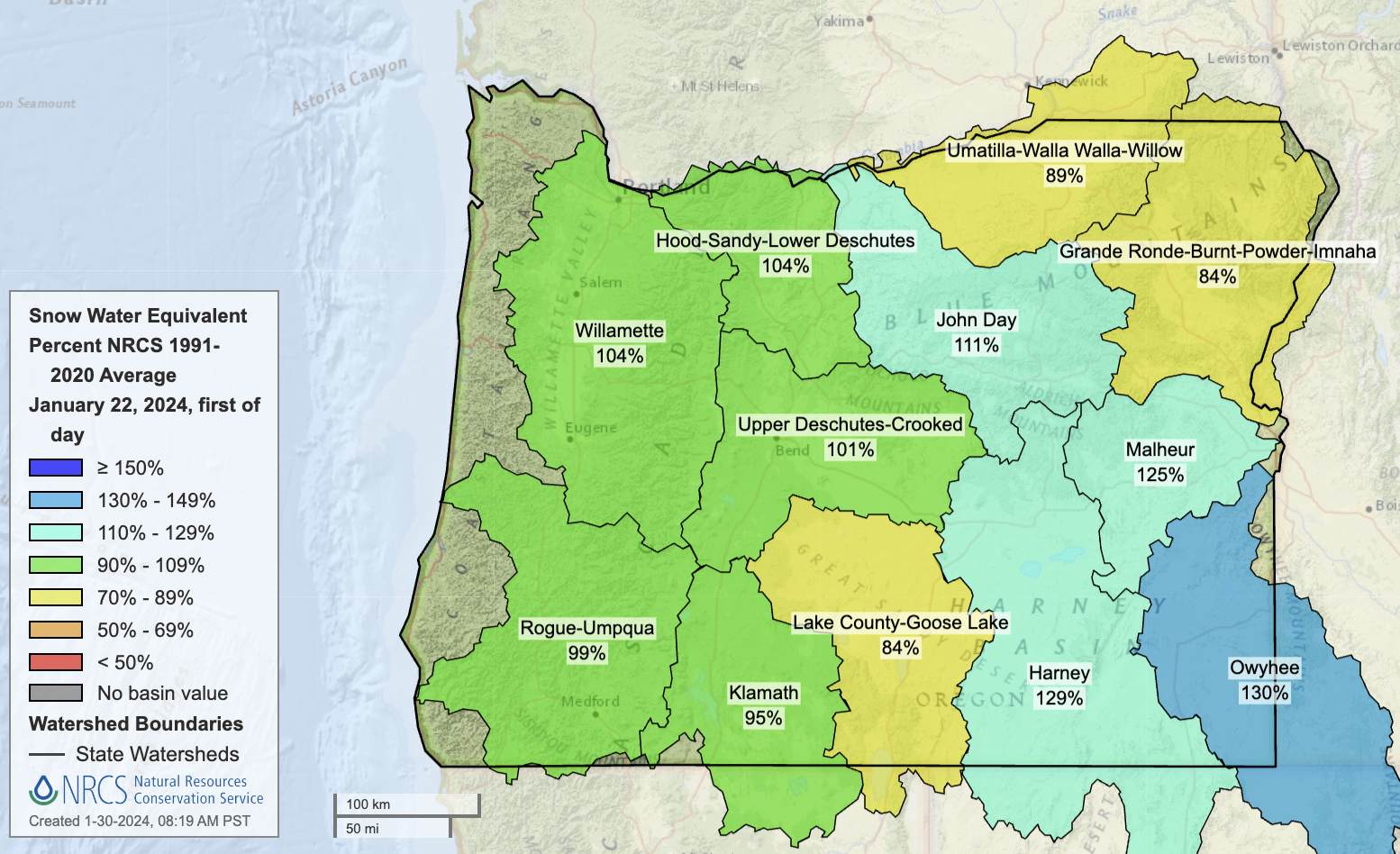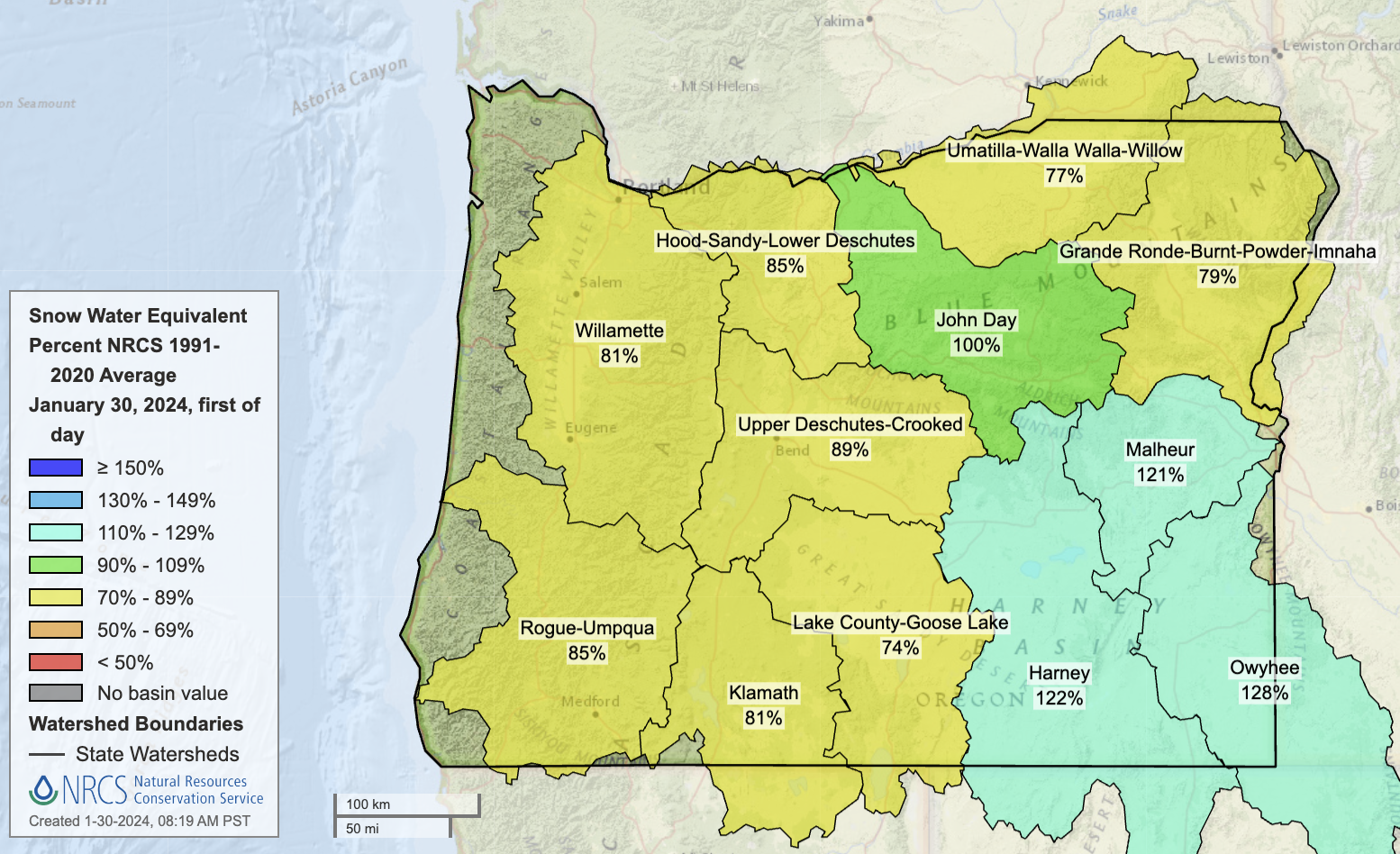BEND, OR -- Much of Oregon saw significant snowfall earlier this month. But the state’s snowpack is now on the decline.
The Natural Resources Conservation Service measures snowpack as a percent of average - what’s considered "normal" for this point in the season. "Last Monday, statewide snowpack was about 100%. And today, it’s sitting at about 89%," says NRCS-Oregon Hydrologist Matt Warbritton.
He says this month’s severe weather is unusual for El Niño, which typically brings warmer, drier weather. "Those storms that did bring significant snow accumulation, that was sort of an anomaly for an El Niño year. We got a bit lucky some larger climatic patterns aligned and El Niño weakened just slightly."
 But now, our snowpack is on the decline, "And that’s in part - or mostly due to warmer temperatures and much of the precipitation that fell in the past few days, even up at high elevation, has fallen as rain." Warbritton says, "Now we’re seeing a more, again dominant El Niño signal these past few days, when we’ve had warmer temperatures and precipitation falling as rain. So, that’s pretty consistent, at least the above normal temperatures are, with stronger El Niño."
But now, our snowpack is on the decline, "And that’s in part - or mostly due to warmer temperatures and much of the precipitation that fell in the past few days, even up at high elevation, has fallen as rain." Warbritton says, "Now we’re seeing a more, again dominant El Niño signal these past few days, when we’ve had warmer temperatures and precipitation falling as rain. So, that’s pretty consistent, at least the above normal temperatures are, with stronger El Niño."
Warbritton says only some areas are actually losing snow, "Parts of the Central Cascades, we’ve seen some melting. In Southern Oregon, the Applegate Basin, as well as the Klamath, there’s also been some melting of snowpack. But overall, there’s just been a lack of additional snow accumulation." And he doesn't expect that to catch back up. The next storm system, coming to the coast and southwest Oregon this week, is expected to bring only rain, even to the mountains.
The current outlook is proving challenging for reservoirs. Warbritton says, "Reservoir managers now have to switch their operations, because they’re used to receiving snow accumulation up in the mountains, as opposed to rain, to better control for flooding." Prineville Reservoir was forced to release some water last week. And that could mean less summer water for irrigators and recreators who rely on those reserves. Although Warbritton says one bright spot is the Ochocos, where the snowpack is faring better than much of the rest of the state.
Images: Oregon's snowpack, based on the percent of average (top) January 30, 2024; (above right) January 22, 2024.




